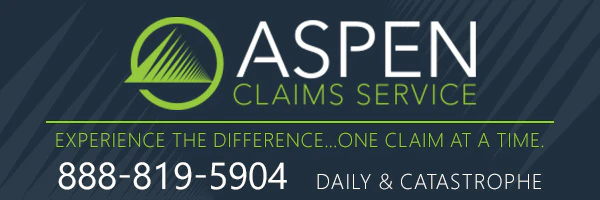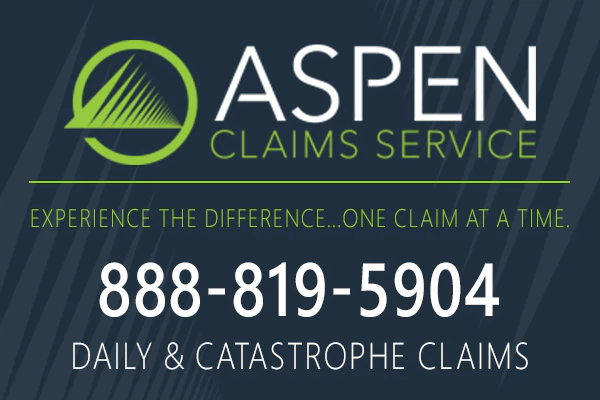
Best Practices for Catastrophic Event Preparedness for Claims Adjusters
Thursday, February 29th, 2024 Claims Pages Staff Best Practices for Handling Catastrophic ClaimsIn the fast-paced world of insurance claims, readiness for catastrophic events isn’t just a part of the job—it’s the foundation of success. Catastrophes such as hurricanes, wildfires, earthquakes, and floods test our resilience, preparedness, and ability to adapt in the face of adversity. As claims adjusters, you are on the frontline, ensuring that when disaster strikes, response efforts are swift, efficient, and, most importantly, human-centric.
The Imperative of Preparedness
Preparedness isn’t merely about having a plan; it’s about anticipating the unpredictable and mitigating the impact of disasters on the communities we serve. It’s the difference between being reactive and proactive—a distinction that can define the recovery journey of those affected.
Understanding the Landscape of Catastrophic Claims
Before diving into the strategies for preparedness, it’s crucial to understand the landscape of catastrophic claims. These are not your everyday claims; they are characterized by their significant impact, both in terms of physical damage and emotional toll on the insured. They often involve a large number of claims arising from the same event, requiring a coordinated, large-scale response.
The Role of a Claims Adjuster in Catastrophic Events
As a claims adjuster, you are the bridge between despair and hope. Your role extends beyond assessing damage and processing claims; you provide a listening ear, a guiding hand, and a beacon of hope. In catastrophic events, your empathy, expertise, and efficiency can significantly affect the recovery process for those affected.
Building a Foundation: Disaster Response Plans
-
Develop Comprehensive Disaster Response Plans
A well-thought-out disaster response plan is your first line of defense. It outlines how your organization will respond to catastrophic events, detailing every aspect from initial disaster assessment to the final stages of claim resolution. These plans should be:
- Specific: Tailor your plans to different types of disasters, recognizing that each type of catastrophe requires a unique approach.
- Flexible: Adaptability is key. Your plan should allow for real-time adjustments based on the scale and specifics of the disaster.
- Inclusive: Involve stakeholders from every level of your organization in the planning process, ensuring that each team knows their role and how to execute it effectively.
-
Conduct Regular Training and Simulations
Knowledge without practice is like a book on a shelf—valuable but not utilized. Regular training sessions and simulation exercises can bridge this gap, transforming theoretical knowledge into practical skills. These sessions should:
- Simulate a variety of disaster scenarios to prepare your team for any eventuality.
- Include cross-functional training, ensuring that team members can perform essential functions outside their regular duties if needed.
-
Emergency Communication Protocols
Clear, concise, and effective communication during a catastrophic event can save lives, reduce panic, and streamline the claims process. Establishing emergency communication protocols involves:
- Identifying communication channels that will remain accessible during disasters.
- Creating a hierarchy of communication, ensuring that information flows efficiently from decision-makers to frontline staff and vice versa.
- Preparing templates for common communications to expedite message dissemination.
By laying the groundwork with a robust disaster response plan, regular training, and effective communication protocols, claims adjusters can significantly improve their preparedness for catastrophic events. These strategies not only enhance the ability to respond quickly and efficiently but also ensure that the human element remains at the forefront of disaster response efforts.
Integrating Technology in Disaster Response
In today’s digital age, leveraging technology is non-negotiable for claims adjusters aiming to enhance their efficiency and accuracy. Advanced tools and software can transform how catastrophic claims are handled, from initial assessment to final settlement.
Geospatial Analysis and Drones: Utilizing satellite imagery and drones can significantly speed up the assessment process. Geospatial technology helps in identifying affected areas and assessing damage levels even before adjusters can physically reach the scene. Drones, on the other hand, offer real-time, aerial views of the damage, providing a clear picture of the situation without the need for adjusters to put themselves in harm’s way.
Claims Management Systems (CMS): A robust CMS can streamline the entire claims process, from first notice of loss (FNOL) to closure. These systems not only help in managing claims efficiently but also in storing data securely, ensuring that adjusters have access to the information they need when they need it.
Mobile Apps: Mobile technology has opened new avenues for claims adjusters. Apps designed for claims handling can enable adjusters to capture images, submit forms, and even communicate with policyholders directly from the field. This immediacy not only improves efficiency but also enhances the policyholder’s experience during a stressful time.
Strengthening Communication Protocols
Clear and effective communication is the backbone of successful catastrophic claims handling. Establishing robust communication protocols ensures that all stakeholders are on the same page, reducing misunderstandings and speeding up the resolution process.
Emergency Communication Plans: Having a predefined plan detailing how to communicate before, during, and after a catastrophic event is crucial. This plan should include preferred communication channels, a hierarchy of messaging (what information goes to whom, and when), and contingency plans in case standard communication lines fail.
Policyholder Education: Educating policyholders on what to do in the event of a catastrophe is equally important. Simple, straightforward guidelines on how to file claims, what information will be needed, and what steps they can expect in the claims process can alleviate anxiety and streamline the initial stages of claims handling.
Stakeholder Updates: Regular updates to policyholders, team members, and other stakeholders are vital during the claims process. These updates not only keep everyone informed but also build trust and confidence in the adjuster’s ability to manage the situation.
Building a Resilient Team
The effectiveness of a claims adjuster in handling catastrophic events often comes down to the strength and resilience of their team. Building a team that can withstand the pressures of a disaster scenario involves several key components:
Training and Education: Continuous professional development ensures that your team is equipped with the latest knowledge and skills. Regular training sessions on the latest industry practices, technology tools, and stress management techniques can prepare your team to handle any situation they face.
Mental Health Support: Recognizing the emotional toll that catastrophic events can take on adjusters is critical. Providing access to mental health resources, including counseling services and stress management programs, can help team members maintain their well-being in the face of challenging conditions.
Cross-functional Collaboration: Encouraging collaboration between different departments can enhance the team’s effectiveness. For instance, working closely with the underwriting and customer service departments can provide a more holistic view of the policyholder’s experience, leading to better-informed decision-making.
By integrating technology, strengthening communication protocols, and building a resilient team, claims adjusters can significantly improve their preparedness for catastrophic events. These strategies not only enhance the claims handling process but also contribute to a positive outcome for all involved parties.
As we approach the final stretch of our comprehensive guide on best practices for catastrophic event preparedness for claims adjusters, it’s crucial to focus on the aftermath of such events and the importance of continuous improvement in our processes and approaches.
Facilitating Long-Term Recovery
The aftermath of a catastrophic event is a critical period that demands as much attention and care as the immediate response. Facilitating long-term recovery involves several key strategies that can help communities rebuild and recover more effectively.
Collaboration with Local Authorities and Organizations: Building partnerships with local government bodies, non-profits, and community organizations can be instrumental in understanding the broader impact of the catastrophe and coordinating recovery efforts. These collaborations can also provide valuable resources and support to affected individuals and businesses.
Advocating for Policyholders: Claims adjusters play a vital role in advocating for their policyholders during the claims process. This includes negotiating fair settlements, providing guidance on next steps, and sometimes liaising with contractors and repair services. Your role as an advocate does not only ensure the policyholder’s recovery but also builds trust and loyalty, which is invaluable for the long-term reputation of your organization.
Post-Event Analysis and Feedback: After a catastrophic event, conducting a thorough review of how the situation was handled is crucial. This includes analyzing response times, the effectiveness of communication channels, and overall customer satisfaction. Gathering feedback from policyholders, team members, and other stakeholders can provide insights into areas for improvement.
Committing to Continuous Improvement
The landscape of catastrophic claims is ever-evolving, with new challenges and opportunities arising from each event. Committing to a culture of continuous improvement ensures that your organization remains adaptive and responsive to these changes.
Investing in Training and Technology: Continuous investment in the latest technology and training for your team is essential. This not only keeps your team at the forefront of industry advancements but also ensures they are well-prepared to handle future catastrophic events.
Implementing Lessons Learned: Each catastrophic event provides a unique set of lessons that can improve future responses. Implementing these lessons into your standard operating procedures, training programs, and technology platforms can significantly enhance your preparedness and response capabilities.
Fostering Innovation: Encouraging a culture of innovation within your team can lead to the development of new strategies and tools for managing catastrophic claims. This might include innovative uses of technology, new approaches to customer service, or novel ways of streamlining the claims process.
Conclusion
In the face of catastrophic events, the role of claims adjusters becomes critically important. Through meticulous preparation, the integration of technology, effective communication, team resilience, and a commitment to long-term recovery and continuous improvement, claims professionals can significantly enhance their response to disasters. This not only benefits the policyholders who rely on their expertise but also contributes to the broader goal of building more resilient communities.
As we conclude this guide, remember that the journey towards excellence in catastrophic claims handling is ongoing. The strategies and best practices outlined here provide a solid foundation, but the true strength lies in our ability to adapt, learn, and innovate with each challenge we face. By embracing these principles, claims adjusters can lead the way in providing compassionate, efficient, and effective responses when disaster strikes, truly making a difference in the lives of those affected.
Advance your expertise in the critical area of catastrophic claims management with our insightful series on "Best Practices for Handling Catastrophic Claims." Each article within the series offers a deep dive into strategic methodologies and best practices essential for effectively managing claims in the wake of disasters. From thorough preparation for unforeseen catastrophic events to the intricacies of communication and emotional intelligence in high-pressure environments, our series thoroughly addresses the crucial aspects of catastrophic claims management. Elevate your professional skill set and stay ahead in the complex landscape of catastrophic claims, ensuring your preparedness and resilience in facing these significant challenges.

